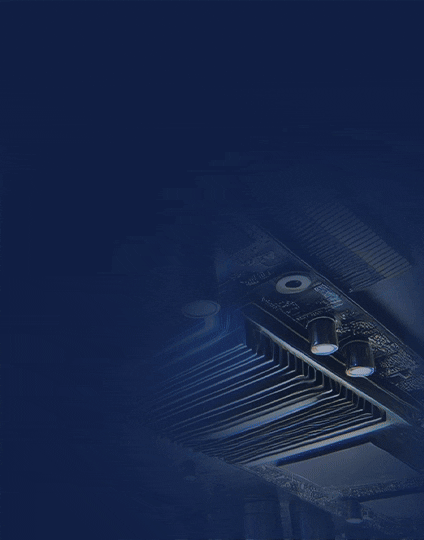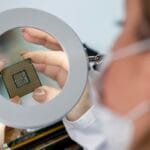FPGA Insights has engaged in an exclusive interview with Tim Mazumdar, FPGA Engineer/5G Architect at Bluewave Mobility Solutions
Q1) Can you provide an overview of your organization and the services/products it offers?
My employers in Toronto offer 5G Radio units for sale based on FPGAs.
Q2) Can you explain the benefits of using FPGAs over other types of processors?
FPGAs are most suitable for workloads in AI, digital communications. FPGAs have tremendous advantages in applications where the logic path can be upgraded over the life of a product they are reprogrammable over JTAG. FPGAs are built with embedded processors such as ARM A-53 are very common for Xilinx RFSOC FPGAs, the workload is split over 4 ARM processor cores running at 1.5 GHz and an FPGA data fabric running up to 600 MHz.
Many FPGAs come with built-in 100G ethernet MAC and PHY which is a must for Data center applications. In Data centers such FPGAs are virtualized – that is the FPGAs are packed with CPU and GPU. This creates a unique value proposition also known as FPGA -as-a-service – FAAS.
Certain FPGAs have three kinds of Interfaces – PCIe5, Ethernet 100G, and GDDR6.0 connected by an onboard Network on Chip – NOC. One example is the Achronix Speedster 7T fabricated on a TSMC 7nm process. In this, the internal Block RAMs run above 1 GHz and the NOc allows simultaneous data transfer from Ethernet to Logic Fabric and Logic Fabric to DRAM.
For many applications in the data center, this is invaluable, Such FPGAs also integrate AI-specific logic.
FPGAs with integrated High Bandwidth memory have been very valuable in running AI, Machine learning, and Video processing tasks such as Xilinx Virtex Ultrascale HBM.
They integrate 16 GB of HBM on die and their low latency is very useful for systems such as Fintech which require both Ethernet connectivity and High memory BW FPGA.
Q3) Key drivers behind the increasing adoption of FPGAs in various applications and industries?
Ability to create economic value
Q4) Sectors that stand to benefit the most from FPGA integration, and why?
1. Generative AI requires smooth integration of RISC-V type cores and Tensor processing units (TPUs).
FPGAs have huge advantages – they can be configured with a Network of chips to keep the TPUS fed with data at a high rate.
Broadly AI will gain as a result of FPGAs and their ability to morph into different computational structures. A technology that allows this thing to happen for AI workloads is called “partial reconfiguration” which is what happens when certain parts of the FPGA remain fixed logic and some other parts are reconfigured.
2. Smart Data storage with NVM and ethernet in Data centers – this application requires the FPGA to perform data compression and decompression on the fly.
It’s also a type of Internet appliance that might have a Video decompression pipeline built into an FPGA. Data is read from NVM memory and decompressed using algorithms such as Lempel Zif.
3. DNA chain matching using FPGAs. This is already an established field that utilizes large-scale string matching with algorithms like Smith-Waterman. This is an area where FPGAs have found great success in parallel string matching.
4. Ethernet Smart NICs – a Smart NIc is a device that can perform packet classification, QOS, and packet forwarding all on FPGA without involving any CPU.
FPGA-based Smart NICs will be the de facto standard as they are far more power efficient and their functionality can be enhanced by a simple FPGA bitfile upgrade.
Q5) Ensuring the security and integrity of FPGA designs, especially in sensitive applications like finance and defense.
FPGAs are playing a key role in configuring Quantum computers and are expected to play a major role in quantum key cryptography.
It’s quite easy to integrate AES256 crypto for end-to-end data protection in FPGAs doing so requires under 5000 LUTs modern FPGAs with Ethernet Interfaces benefit as a result.
Also, FPGAs are highly suitable in Smart NICs that require Deep Packet Inspection. This offloads the task from CPU/GPU and FPGAs can run multiple algorithms in parallel to sniff out suspicious Ethernet packets by looking into their payload. Lower security standards like AES 192 are even easier to integrate.
Q6) Advice for students and professionals interested in pursuing a career in FPGA development to stay updated with the latest trends and technologies.
- Keep coding Verilog, System Verilog, and VHDL. Purchase a low-cost board like a Xilinx A100 board or a low-cost board like ICe from Lattice.
- If you know Xilinx you don’t necessarily know Intel FPGA flow as the two flows Quartus and Platform compiler are VERY different.
- Take some classes over Udemy or other MOOCs but keep sharp by coding different algorithms on boards.












